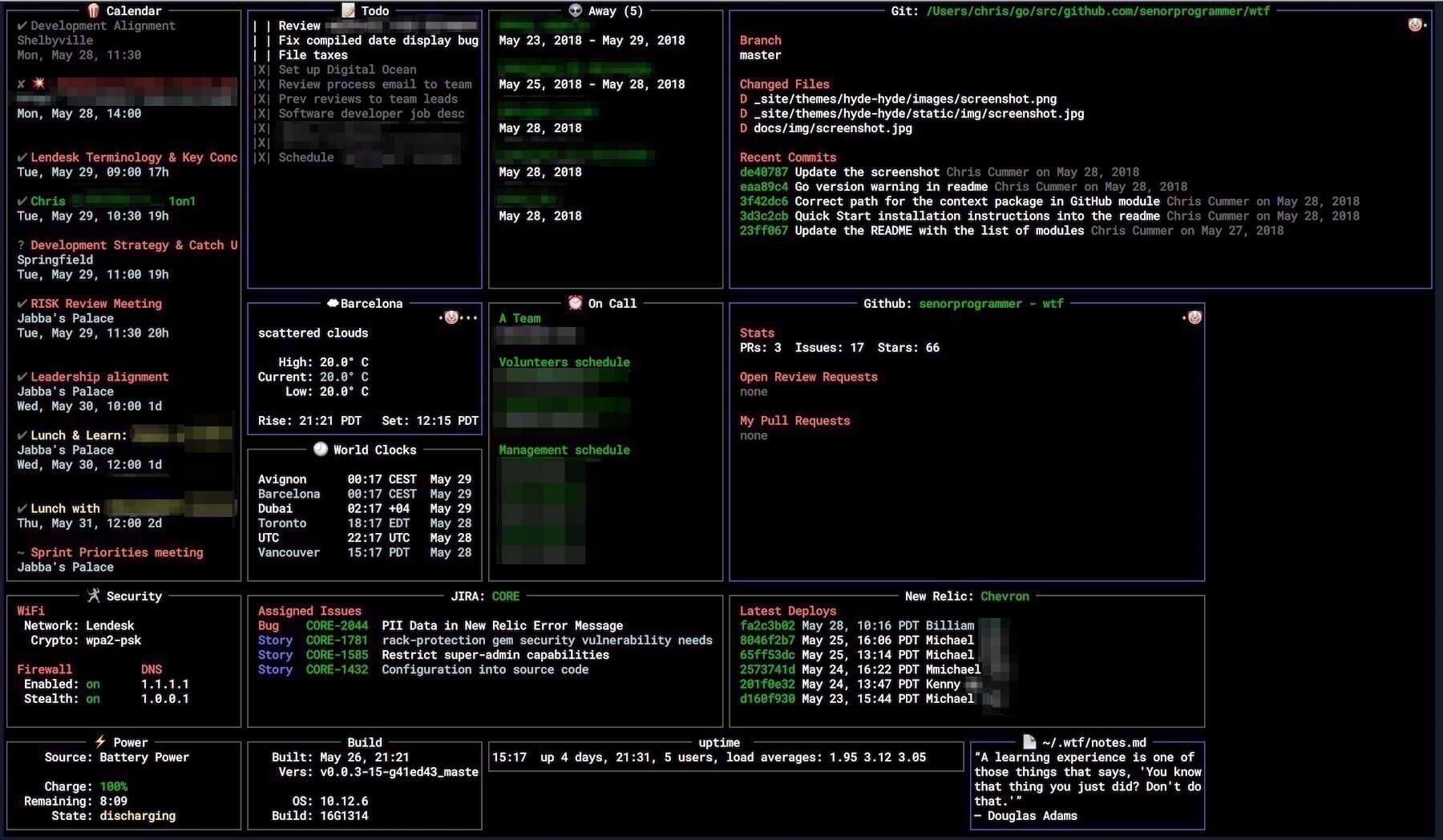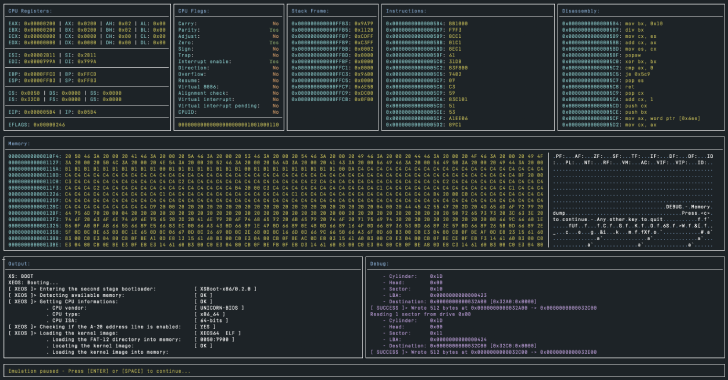WTF is a personal terminal-based dashboard utility, designed for displaying infrequently-needed, but very important, daily data. WTF is only compatible with Go versions 1.9.2 or later. It currently does not compile with gccgo.

Also Read Cr3dOv3r – Know The Dangers Of Credential Reuse Attacks
WTF Installation
There are two ways to install WTF:
From Source
Get this repo and install the dependencies:
go get -u github.com/senorprogrammer/wtf
cd $GOPATH/src/github.com/senorprogrammer/wtf
make install
make runand that should probably do it.
As a Binary
Grab the latest version from here:
https://github.com/senorprogrammer/wtf/releasesexpand it, and cd into the resulting directory. Then run:
./wtfand that should also do it.
Configuration
Configuration Files
By default WTF looks in a ~/.config/wtf/ directory for a YAML file called config.yml. If the ~/.config/wtf/ directory doesn’t exist, it will create that directory on start-up, and then display instructions for creating a new configuration file.
In other words, it expects to have a YAML config file at: ~/.config/wtf/config.yml.
Example Configuration Files
A couple of example config files are provided in the _sample_configs/ directory of the Git repository.
To try out WTF quickly, copy simple_config.yml into ~/.config/wtf/ as config.yml and relaunch WTF. You should see the app launch and display the Security, Clocks and Status widgets onscreen.
Custom Configuration Files
To try out different configurations (or run multiple instances of WTF), you can pass the path to a config file via command line arguments on start-up.
To load a custom configuration file (ie: one that’s not ~/.config/wtf/config.yml), pass in the path to configuration file as a parameter on launch:
$> wtf --config=path/to/custom/config.ymlConfiguration Attributes
A number of top-level attributes can be set to customize your WTF install. See Attributes for detials.
Environment (ENV) Variables
Some modules require the presence of environment variables to function properly. Usually these are API keys or other sensitive data that one wouldn’t want to have laying about in the config files.
For modules that require them, the name of the required environment variable(s) can be found in that module’s “Required ENV Variables” section of the documentation.
Grid Layout
WTF uses the Grid layout system from tview to position widgets onscreen. It’s not immediately obvious how this works, so here’s an explanation:
Think of your terminal screen as a matrix of letter positions, say 100 chrs wide and 58 chrs tall.
Columns breaks up the width of the screen into chunks, each chunk a specified number of characters wide. use
[10, 10, 10, 10, 10, 10, 10, 10, 10, 10]
Ten columns that are ten characters wide
Rows break up the height of the screen into chunks, each chunk a specified number of characters tall. If we wanted to have five rows:
[10, 10, 10, 10, 18]
The co-ordinate system starts at top-left and defines how wide and tall a widget is. If we wanted to put a 2-col, 2-row widget in the bottom of the screen, we’d position it at:
top: 4 // top starts in the 4th row
left: 9 // left starts in the 9th column
height: 2 // span down rows 4 & 5 (18 characters in size, total)
width: 2 // span across cols 9 & 10 (20 characters in size, total)
















